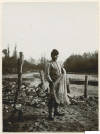Ethnoichthyology of freshwater fish in Europe: a review of vanishing traditional fisheries and their cultural significance in changing landscapes from the later medieval period with a focus on northern Europe
- PMID: 33121508
- PMCID: PMC7597041
- DOI: 10.1186/s13002-020-00410-3
Ethnoichthyology of freshwater fish in Europe: a review of vanishing traditional fisheries and their cultural significance in changing landscapes from the later medieval period with a focus on northern Europe
Abstract
Background: Fishing is probably one of the oldest economic activities in the history of humankind. Lakes, rivers and streams in Europe are important elements in the European landscape with a rich diversity of fish and other aquatic organisms. Artisanal fisheries have therefore been of great importance for the provision of food, but also animal feed, medicine, fertilizer and other needs. These fishermen had a deep knowledge about the waterscape and its biota. However, ethnoichthyology remains a small topic within contemporary ethnobiology in Europe. Our focus lies within northern Europe in the late medieval to modern period, but encompasses the wider area with some reference to earlier periods where informative.
Method: We have reviewed a large amount of literature mainly on the relationship between man and fish in freshwaters from late medieval times (defined here as the fifteenth century) until the early twenty-first century. The main focus is on freshwater (including anadromous and catadromous) fish in northern Europe, the main area of study for both authors, though examples have been included from elsewhere to indicate the widespread importance of these fisheries. The review includes studies from various fields such as archaeology, ethnography, fish biology, geography, linguistics and osteology to map what has been studied of interest in ethnoichthyology. These data have been analysed and critically reviewed.
Results: There are archaeozoological studies, studies of specialised fishers as well as artisanal fishing among the peasantry, research of folk taxonomies, fishing methods (including the use of poison) and gear, which are all of great interest for ethnoichthyology. There is also research on traditional preserving methods for fish as food and for other purposes. Of interest is the keeping of fish in wells, ponds and aquaria. However, there is still room for more research within many domains of ethnoichthyology.
Conclusion: Humans have always utilized fish and other aquatic resources. Nonetheless, few ethnobiologists working within Europe are so far researching human-fish relationships. This paper demonstrates the range of research available, but also points to future studies. It is important to widen ethnobiological research in Europe to include fish.
Keywords: Archaeozoology; Ethnozoology; Fishing culture; Fishing practices; Fishponds; Folk biology; Foraging activities; Human nutrition; Human-animal relationship.
Conflict of interest statement
The authors declare that they have no competing interests.
Figures















References
-
- FAO . The State of World Fisheries and Aquaculture 2020. Sustainability in action. Roma: The Food and Agricultural Organization; 2020.
-
- Sahrhage D, Lundbeck J. A History of Fishing. Berlin: Springer-Verlag; 1992.
-
- Morales Muñiz A, Bekker-Nielsen T, Casasola DB. Ancient Nets and Fishing Gear: Proceedings of the International Workshop on “Nets and Fishing Gear in Classical Antiquity: A First Approach”. Cádiz, November 15–17, 2007. Cádiz: University of Cádiz Publications; 2010. Inference about prehistoric fishing gear based on archaeological fish assemblages; pp. 25–54.
-
- Freyhof J, Brooks E. European red list of European fish. Luxemburg: Publications office of the European Union; 2011.
Publication types
MeSH terms
LinkOut - more resources
Full Text Sources

